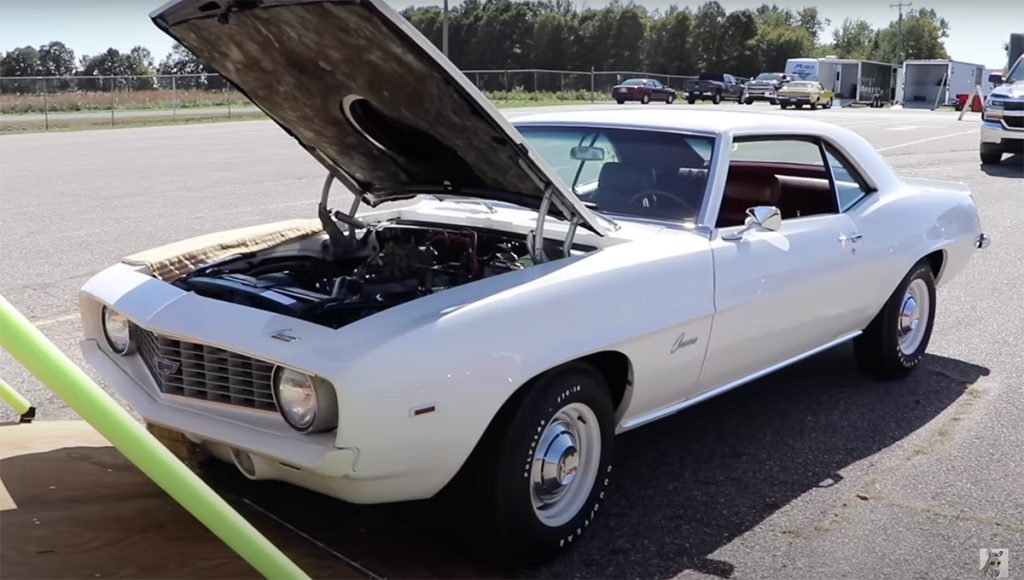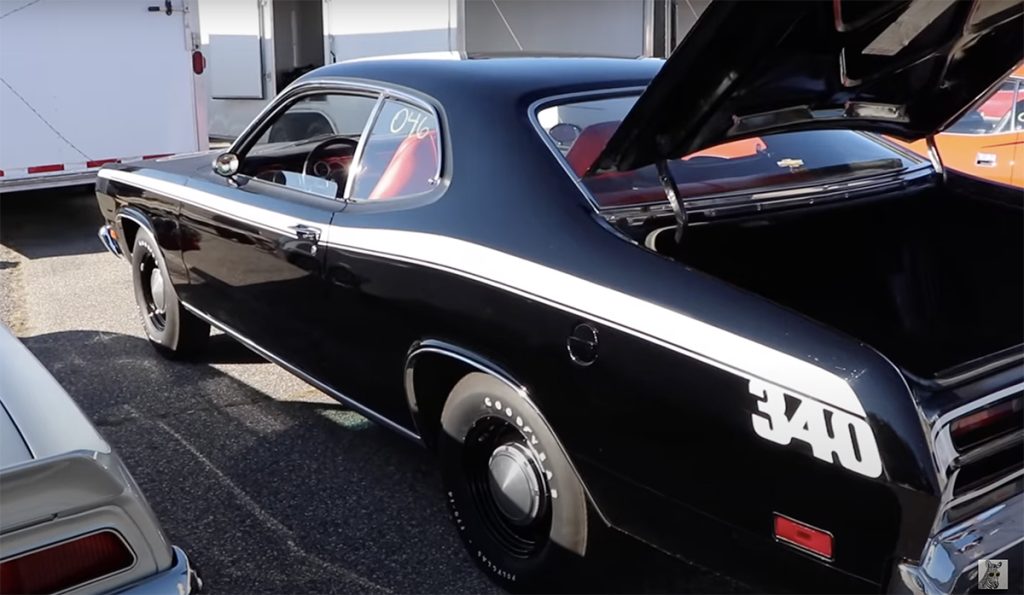If you’re a fan of classic muscle cars, you’ve probably heard of the COPO Camaro ZL1 and the Duster 340. These two cars were known for their impressive performance and have become icons of the muscle car era. In this article, we’re going to take a closer look at these two cars and their head-to-head battle in a pure stock drag race.

The COPO Camaro ZL1 was a product of the Central Office Production Order (COPO) system used by Chevrolet to order fleet vehicles. Crafty dealerships figured out that they could use this system to order engines and cars that were otherwise unavailable, like the 427 engine in a Camaro. The ZL1 was a special edition Camaro that came with an aluminum block, cylinder heads, and intake manifold, as well as a Holley 850 carburetor and a solid lifter cam. The compression ratio was 12 to 1, and the car was rated at 430 horsepower at 5200 RPM and 450 pound-feet of torque at 4400 RPM.
The Duster 340 was a Plymouth model that was introduced in 1970. It was equipped with a 340 cubic inch V8 engine that was rated at 275 horsepower at 5000 RPM and 340 pound-feet of torque at 3200 RPM. The car was an all-out pure stock drag racing build, with every mod that was allowed.
The COPO Camaro ZL1
The COPO Camaro ZL1 is a highly sought-after muscle car among collectors and enthusiasts alike. It is known for its impressive performance and unique features, such as the all-aluminum engine and solid lifter cam. The car was only produced in limited numbers, making it a rare find today.

The ZL1 engine was a masterpiece of engineering, with its aluminum block, cylinder heads, and intake manifold. The carburetor was a Holley 850, which provided ample fuel delivery for the high-performance engine. The car was also equipped with a 4-speed manual transmission, which allowed for precise gear changes and maximum power delivery.
Overall, the COPO Camaro ZL1 was a force to be reckoned with on the drag strip, thanks to its powerful engine, lightweight construction, and agile handling.
The Duster 340
The Duster 340 was Plymouth’s answer to the muscle car craze of the early 1970s. It was a lightweight, high-performance car that was designed for drag racing. The car was equipped with a 340 cubic inch V8 engine that was rated at 275 horsepower at 5000 RPM and 340 pound-feet of torque at 3200 RPM. While the engine wasn’t as powerful as the ZL1’s, it was still a formidable performer in its own right.

The Duster 340 was also available with a TorqueFlite 3-speed automatic transmission, which made it easier to drive on the street. The car had a conservative set of 3.23 gears, but some models were upgraded to 4.10 gears for better performance on the drag strip.
Despite its lower horsepower rating, the Duster 340 was still a capable performer on the drag strip. It was lightweight and nimble, and it had a reputation for being a fast and reliable racer.
Pricing and Availability
The COPO Camaro ZL1 was a limited-production car, with only 69 units produced in 1969. The base price of the car was $7,100, which was a significant amount of money at the time. Adjusted for inflation, the price of the ZL1 today would be around $50,992.
The Duster 340, on the other hand, was a more affordable option for enthusiasts. The car had a starting price of $2,703 in 1971, which was considerably less than the ZL1. Adjusted for inflation, the price of the Duster 340 today would be around $18,927.
Pure Stock Racing Build
Both the COPO Camaro ZL1 and the Duster 340 were popular choices for pure stock drag racing. The rules for pure stock racing were strict, and only minor modifications were allowed. The goal was to keep the cars as close to their factory specs as possible, in order to create a level playing field for all competitors.

The Duster 340 was a popular choice for pure stock racing, thanks to its lightweight construction and high-performance engine. The car was often modified with headers, a performance intake, and a high-performance camshaft, which helped to increase its horsepower and torque output.

The COPO Camaro ZL1, on the other hand, was more difficult to modify due to its unique features, such as the all-aluminum engine. However, some owners were able to squeeze more power out of the engine by installing a higher-performance camshaft and a performance exhaust system.
Head-to-Head Comparison
In a head-to-head drag race between the COPO Camaro ZL1 and the Duster 340, the outcome would be a close one. Both cars had their strengths and weaknesses, and the outcome would likely depend on factors such as driver skill and track conditions.
The ZL1 had a more powerful engine and a lighter weight, which gave it an advantage in terms of acceleration and top speed. However, the Duster 340 had a more user-friendly automatic transmission, which could help it get off the line more quickly.

In addition, the Duster 340 was a more affordable option, which made it more accessible to the average enthusiast. The COPO Camaro ZL1, on the other hand, was a rare and highly collectible car that was often seen as a status symbol.

Overall, both cars were impressive performers in their own right, and it’s clear that they both had their strengths and weaknesses. In the end, the outcome of a head-to-head race would likely come down to the skill of the driver and the conditions on the track.
Conclusion
In conclusion, the COPO Camaro ZL1 and the Duster 340 were two of the most iconic muscle cars of the 1960s and 1970s. They were both popular choices for drag racing, and they both had their own unique features and strengths.

While the ZL1 was a more powerful and rare option, the Duster 340 was a more accessible and user-friendly choice. Ultimately, both cars were impressive performers on the drag strip, and they both hold a special place in the hearts of muscle car enthusiasts.
If you’re in the market for a muscle car, whether it’s a COPO Camaro ZL1 or a Duster 340, be sure to do your research and find the car that’s right for you. And if you’re lucky enough to own one of these iconic vehicles, be sure to take good care of it and keep the spirit of muscle car racing alive for generations to come.